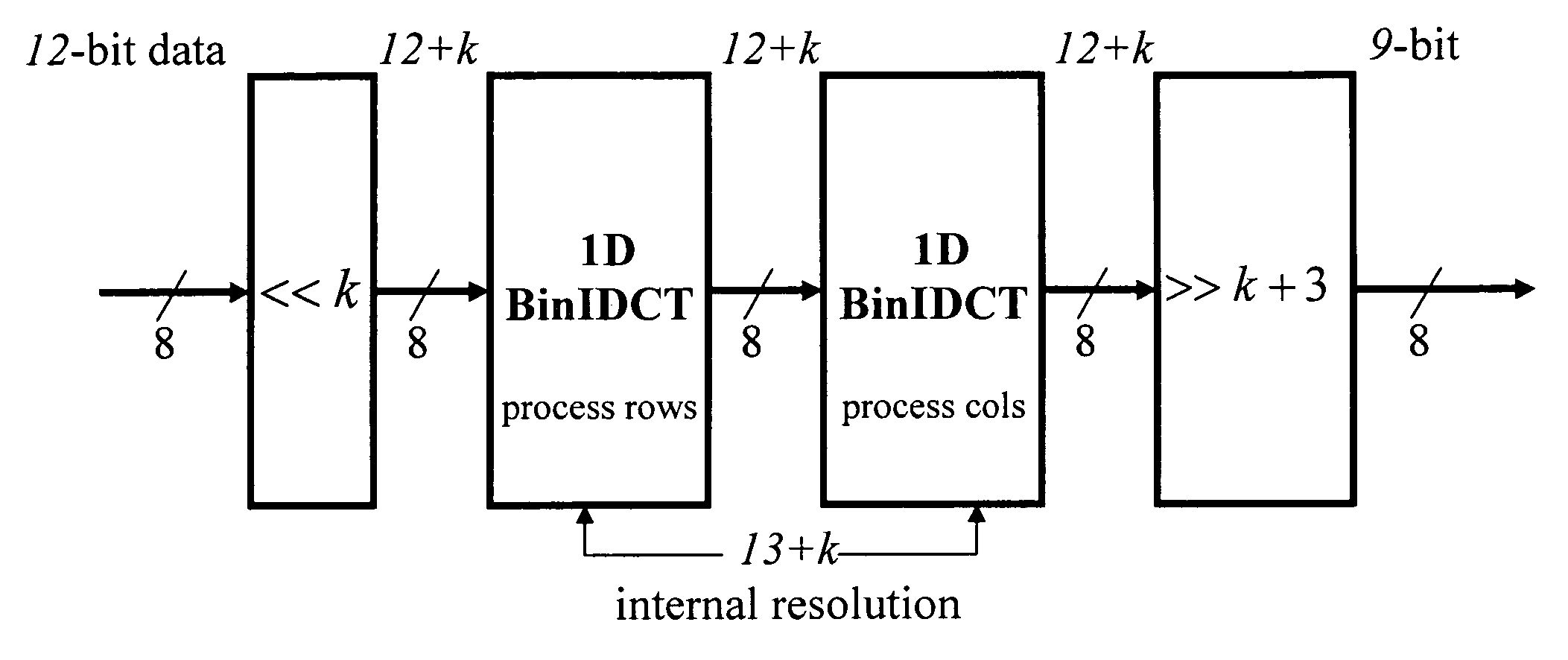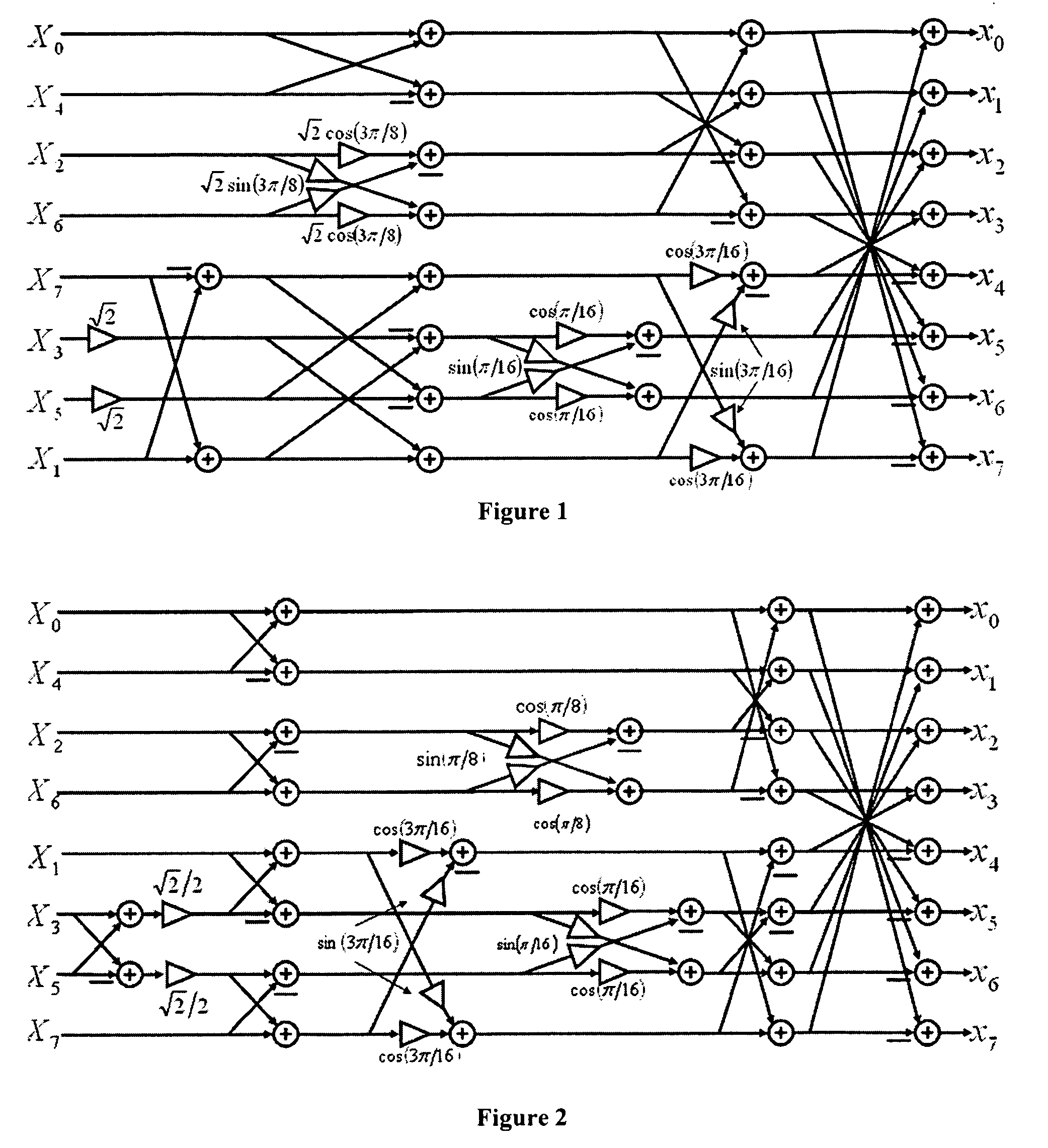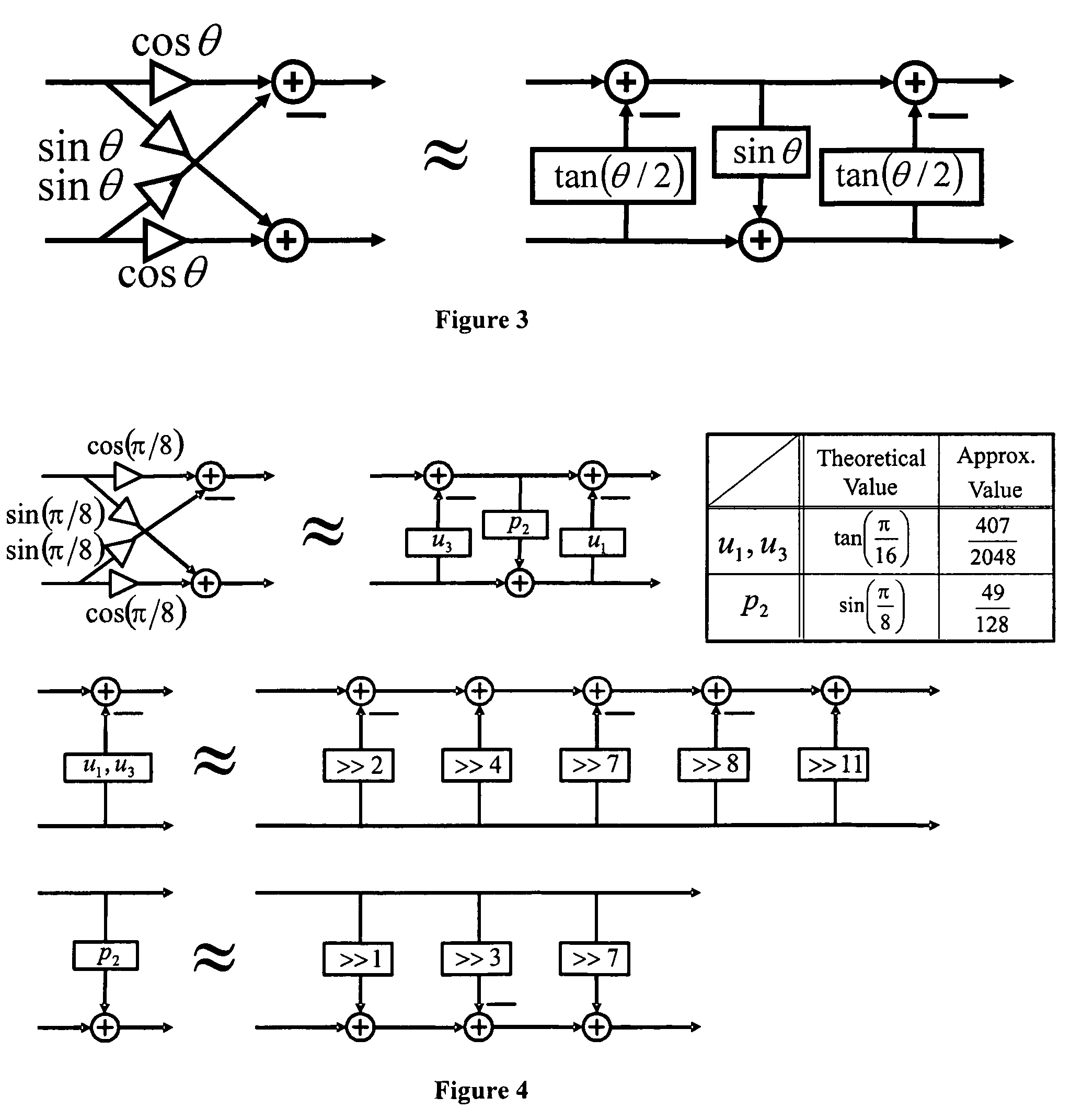Fast multiplierless integer invertible transforms
a multiplierless integer and transform technology, applied in the field of image/video data processing, can solve the problems of approximation errors, mismatch reconstruction of the decoded frame relative to the encoder's model of the intended decoded picture, and accumulation of errors, so as to achieve fast and efficient multiplierless hardware implementation and satisfactory compatibility.
- Summary
- Abstract
- Description
- Claims
- Application Information
AI Technical Summary
Benefits of technology
Problems solved by technology
Method used
Image
Examples
Embodiment Construction
[0066]The Forward and Inverse Transform
[0067]In signal processing, invertible block transformations are frequently used to decorrelate the signal samples, or in general for signal analysis; the inverse of the transform is then used for signal recovery or signal synthesis. Block-based processing with blocks of samples of length M may be used, and the invertible transform may be selected to have special properties, for example be unitary. In multi-dimensional signals, this processing approach is typically applied separably in each of the signal dimensions. For example, in image processing, a unitary transform in common use is the so-called discrete cosine transform (DCT), or its inverse, the IDCT. Typically, a block transform for image processing is applied to a block (or window) of, for example, an M×N group of pixels (or in the inverse case, group of transform coefficients) and the process is iterated over the entire image. The block-wise IDCT (also known as a type-III DCT, unitary ...
PUM
 Login to View More
Login to View More Abstract
Description
Claims
Application Information
 Login to View More
Login to View More - R&D
- Intellectual Property
- Life Sciences
- Materials
- Tech Scout
- Unparalleled Data Quality
- Higher Quality Content
- 60% Fewer Hallucinations
Browse by: Latest US Patents, China's latest patents, Technical Efficacy Thesaurus, Application Domain, Technology Topic, Popular Technical Reports.
© 2025 PatSnap. All rights reserved.Legal|Privacy policy|Modern Slavery Act Transparency Statement|Sitemap|About US| Contact US: help@patsnap.com



